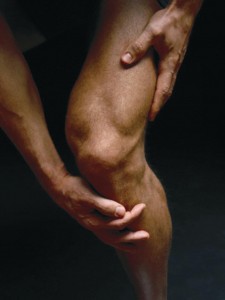I can’t believe the summer is almost over. Students will be back to school.
 It is important to know what type of backpack to use and how to use it properly. Research has shown that wearing poorly designed or overloading backpacks has a long-term health risks in students’ growing spine. In fact, over 50% of Canadian youths suffer from one episode of back pain once in their school year. That is why it is important to know how to carry your loads safely and comfortably to prevent poor posture, neck and shoulder injuries.
It is important to know what type of backpack to use and how to use it properly. Research has shown that wearing poorly designed or overloading backpacks has a long-term health risks in students’ growing spine. In fact, over 50% of Canadian youths suffer from one episode of back pain once in their school year. That is why it is important to know how to carry your loads safely and comfortably to prevent poor posture, neck and shoulder injuries.
- Elementary students should not carry more than 10% of their body weight and secondary students should avoid weight exceeding 15% of their weight? So, if your child is 80 pounds, he shouldn’t carry more than eight pounds- or the equivalent of a pair of shoes, a snack, drink and 2-3 textbooks.
- Backpacks should be made of the lightest material possible– vinyl and canvas are much better than leather.
- The top of the backpack should not extend higher than the top of the shoulder and the bottom should not fall below the top of the hipbone.
- The shoulder straps should be at least 2 inches wide and should not fit too snugly around the arms, straining muscles and affecting nerves.
- A hip strap or waist belt can take as much as 50-70% of the weight off the shoulders and spine. The waist belt will equalize the strain on the bones, joints and muscles.
- Students should pack the heaviest items closest to the body so that the weight is nearest the body’s own centre of gravity.
- A backpack that is too heavy or rides too low causes one to lean forward and put extra strain on the back.
- Both straps are critical to avoiding injury- as slinging the pack on one-side causes the spine to lean, increasing the likelihood of middle and lower back problems that can worsen later in life.
- The best way to put on a pack is to place it on a desk or table at waist height and then slip it on. Avoid twisting!!
;
Have your spine checked regularly to ensure proper alignment. Prevention is key to avoiding injuries. Ask about the British Columbia Chiropractic Association backpack safety program, “Pack it Light, Wear it Right.”
For parents: Here are a few recommendations you can help your children set up their computers to avoid the risk of life-long poor posture, cumulative trauma disorders or repetitive strain injuries. You should be concerned not only what your children are viewing on the Internet, but also how they are sitting while in front of their computers.
The following advice is similar to that which I would give to an adult, simply adapted for a smaller body.

- Monitor should be located directly in front of the body with the eyes directed at the upper 1/3 of the screen. For a child, raise the chair so their eyes are at the correct level.
- Feet should reach the floor. If they don’t, a stool should be placed under the feet so that knees are bent at approximately 100 degrees.
- Elbows should be at 90 to 100 degrees without bending wrists to rest on the keyboard. An adjustable keyboard tray, which can be lowered and angled for each individual user, is a good investment. Keep the elbows close to the body, without having to reach for the mouse and/or keyboard.
- A good chair should support the back with knees resting two inches from the front edge. Place a pillow, or lumbar back support, behind the child’s back for support and to move them forwards so their knees hang free
- Head and shoulders should be relaxed and neutral. Watch for their heads jutting forward.
- Watch the time! Breaks should be taken every 20 to 30 minutes.
Most children, and adults, are now working longer times on the desktops, laptops, tablets and smartphones. It is so important to train our bodies to have better postures as early as possible.
Parents should have their children’s posture assessed once a year by their chiropractors to facilitate proper spinal health in their growing spine.
 OA = Osteoarthritis
OA = Osteoarthritis
    OA can affect any of the joints in your body. The effect of osteoarthritis is the wear and tear on the joining surfaces of the joint. This causes deterioration of the surfaces of the bone. When OA affects your knees, there are many conservative methods to help alleviate the symptoms.
Signs/Symptoms:Â Â Â Â
* Pain in the knee joint especially while weight bearing, and a lack of full extension (straightening) of the knee.
*Â May also experience swelling, Â joint line tenderness, knee cap (patellar) stiffness, decreased muscle strength around the joint, and the knee may feel hot.
Treatment:Â
*Â Use of modalities to relax muscles, aid circulation, decrease swelling, improve range of motion and decrease pain.
*Â Stretching exercises for the soft tissue around the joint to increase the range of motion.
*Â Manual techniques which are used to mobilize the knee cap and the joint to restore functional range of motion.
*Â Comfortable resting positions for the involved area, allowing the muscles to relax and taking the pressure off.
*Â Strengthening exercises for the muscles about the knee joint to increase joint stability
*Â Guidelines for gradual resumption of independent activities of daily living
*Â Nutritional supplements to assists in healing process and care of the affected joints.
*Â Gait analysis to improve walking with aid of custom orthotic insoles.
Â
 It is important to know what type of backpack to use and how to use it properly. Research has shown that wearing poorly designed or overloading backpacks has a long-term health risks in students’ growing spine. In fact, over 50% of Canadian youths suffer from one episode of back pain once in their school year. That is why it is important to know how to carry your loads safely and comfortably to prevent poor posture, neck and shoulder injuries.
It is important to know what type of backpack to use and how to use it properly. Research has shown that wearing poorly designed or overloading backpacks has a long-term health risks in students’ growing spine. In fact, over 50% of Canadian youths suffer from one episode of back pain once in their school year. That is why it is important to know how to carry your loads safely and comfortably to prevent poor posture, neck and shoulder injuries.





